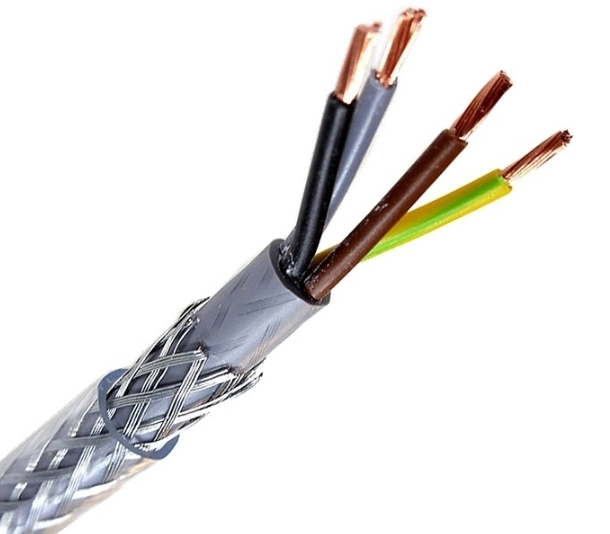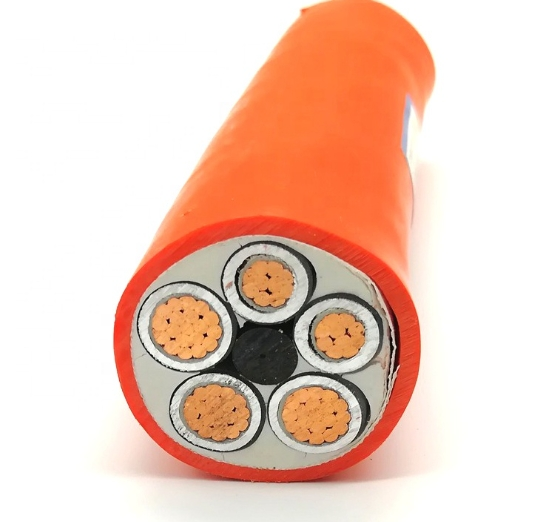When installing cables in large sites such as heavy engineering and hospitals, we often prioritize environmental impact and safety. Well, halogen-free cables present a advanced solution to these concerns. In contrast to conventional cables that contain halogens emitting toxic gases in the event of a fire, halogen-free cables provide a safer option.
Our latest blog post explores the safety and environmental benefits of opting for halogen free power cables. Follow our lead and click through to see how switching to the cables can improve your safety. Best considerations for your next choice!

What halogen-free cable means?
Halogen-Free Cables Meaning Basics
The initial question to address is: what exactly are halogens? Halogens constitute a category of elements that encompasses fluorine, chlorine, iodine, and bromine. The elements are frequently utilized in producing insulation and sheathing materials, thanks to their ability to retard flames and their affordability. PVC is a prevalent example of such application. However, halogens carry inherent risks, notably the emission of significant amounts of toxic fumes upon combustion. In response to these concerns, a shift towards using halogen-free cables is becoming increasingly common among users seeking safer alternatives.
Halogen free jacket cables are the first choice for sustainable and safe cabling solutions. Unlike conventional cables, halogen-free cables do not contain halogen elements such as chlorine and fluorine, which release toxic gases when burned. Halogen-free cables can therefore be used as an alternative in environments where safety is basic. At the same time, it helps to improve air quality and reduce harmful emissions.
What is the advantage of halogen-free cables?
Why should we consider the fire safety benefits of halogen-free cables a significant advantage? One of the most compelling reasons to choose halogen-free cables is their enhanced fire safety.

- Increase safety. A key benefit of halogen free wires lies in their capacity to enhance safety measures. During a fire, cables emit minimal smoke and avoid discharging toxic and corrosive halogenated gases. It significantly lowers the risk of inhalation injuries, vastly improving the odds of a safe evacuation. Consequently, it creates a safer environment for individuals and first responders alike.
- Maximize environmental benefits. The growing concern over the environmental impact of cabling solutions has brought halogen free cables to the forefront as a significant advancement. Halogen free cables are a sustainable choice by eliminating hazardous materials that release toxic gases when burned. An advantage that is in line with the growing environmental awareness aimed at minimizing pollution and preserving natural ecosystems.
- Secure compliance and future-proof. Halogen-free cable standards according to IEC 60754-2 or DIN EN 60754-2. With increasingly stringent global regulations in terms of safety standards and environmental protection, the choice of halogen-free cables is in line with current and future trends.
What are halogen-free cables used in?
halogen-free cables are increasingly recognized for their wide range of applications in different industries and environments. They are particularly beneficial in densely populated or poorly ventilated spaces, such as underground tunnels, public transportation systems, and high-rise buildings. So let’s take a look at the key areas where halogen-free cables perform at their best:
- In the telecom sector, halogen-free cables are used for both indoor and outdoor cabling applications. The low smoke and non-toxic properties are very effective in environments where fire safety and air quality are vital.
- Public spaces, including hospitals, schools, airports, and subway systems, are heavily utilized. In such settings, the importance of efficiently managing safe evacuations during emergencies is frequently highlighted.
- Halogen-free cable is a safer alternative to residential and commercial building wiring. The use of halogen free cable is becoming more common in new construction and renovation projects that prioritize sustainability and occupant safety.
- The electric vehicle industry is reducing vehicle weight and improving safety through the use of halogen-free power cables. Cables play an integral role in wiring harnesses, battery systems and various electrical components.
- Halogen-free cables are also a common part of a variety of industrial applications, such as automation, control systems and machinery wiring. Plants and equipment focus on minimizing environmental impact while keeping electrical systems safe and reliable.
Halogen-Free Cable vs PVC cable
When considering the various options for cabling in any project, there are two important types that are often at the top of the list: halogen free wires and PVC cables. But under what circumstances can we choose one over the other? Below, we’ll look at three key areas of difference between two types of cable, providing practical applications and reflecting on key questions to help you make the best choice.
Which type of cable offers greater durability, halogen free or PVC?
Low smoke zero halogen cable insulation and materials offer greater durability, especially in extreme conditions. They can withstand higher temperatures and harsh environmental factors without deterioration. For example, in industrial applications where cables are exposed to chemicals or high temperatures. On the other hand, PVC jacket cables are durable under normal conditions. However, it may not hold up well under extreme stress, resulting in a shorter service life in certain environments.
We can see more clearly how halogen free cables behave in case of fire in the following video:
Which exhibits better safety performance, halogen-free cables or PVC cables?
What happens when cables become part of a fire scene? In the event of a fire, PVC cables can release hydrochloric acid and other toxic gases, which can greatly increase the risk of injury to individuals and damage to electronic equipment. In addition, the gases can hinder evacuation and rescue efforts. In contrast, low smoke halogen-free electrical cables produce far fewer toxic fumes and halogen gases.
So is there a difference in price between the two types?
Halogen free cables tend to have a higher market price than PVC cables. It is mainly due to their outstanding safety features. The increased safety features are accompanied by higher production costs.
Why choose Halogen-free cable?
Have you ever been in a similar situation: when we do not have a clear understanding of their own needs at the beginning of the construction of electrical projects or choose a poor quality of cable and safety hazards. Then when choosing cable and wires, we try to choose low smoke halogen-free wires from professional cable manufacturers. In the event of a fire, halogen-free cables compared to conventional cables can reduce the risk of toxic gas emissions, for evacuation and emergency response to create a safer environment. At critical times, the low smoke production of halogen-free cables ensures better visibility, largely minimizing harm to personnel.
Halogen-free cable Conclusion
In the long run, halogen-free cables are safer and more environmentally friendly. Therefore, choosing a quality halogen-free cable manufacturer is indisputable for those who are safety-conscious and for large-scale projects.Such as ZW Cable has strict quality controls and every product meets or exceeds industry standards. We has a wide range of cables to provide solutions for almost any electrical need. e.g. halogen free flame retardant cables and lszh cables.
Should you have any inquiries about the product or wish to proceed with a purchase, please do not hesitate to reach out to us for further details!
FAQs
1.What are the disadvantages of halogen-free cable?
While halogen free cables offer significant safety and environmental benefits, they present challenges such as higher costs compared to standard cables and potential limitations in mechanical and thermal performance under certain conditions.
2. What is low smoke halogen free material?
Low Smoke Halogen Free (LSHF) cables are designed with insulation that is free from halogens—elements like Fluorine (F), Chlorine (Cl), Bromine (Br), Iodine (I), and Astatine (At)—and devoid of environmentally harmful substances such as lead, cadmium, chromium, and mercury. When exposed to fire, LSHF cables do not release smoke or halogenated gases, greatly reducing the release of toxic and corrosive gases. By utilizing LSHF materials in cable production, halogen free cables provide a high-performance and reliable wiring solution.





